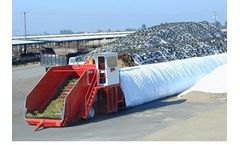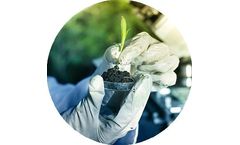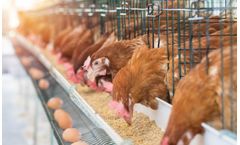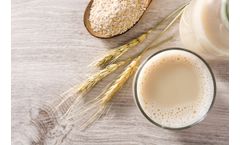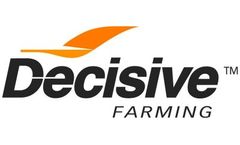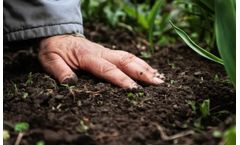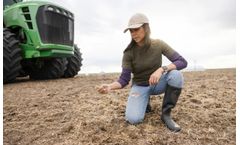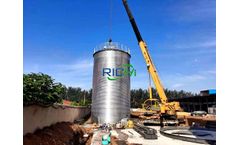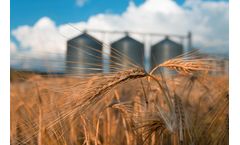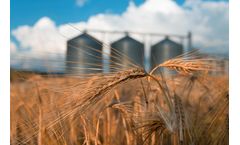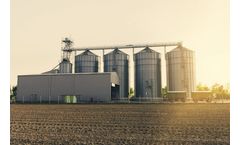Refine by
Cereal Articles & Analysis
149 articles found
So what’s to know about the differences of silage storage in bags as opposed to piles, bunkers, trenches or dry hay? Plenty! Bagging Silage has been proven to be more cost-effective as well as providing better herd health. Milk production is increased with Dairy Cows and increased weight gain with Beef Cattle. ...
By Application: Crop-Based: Includes grains, cereals, pulses, fruits, and vegetables. The growth is primarily driven by cereal crop production, with regions such as Asia-Pacific leading. ...
Plastic Applications for Agriculture Plastics have a variety of applications in the agriculture industry, including but not limited to: Mulch films for cereal crops Bulk bags for crop transportation Veterinary medicine containers Hoses and nozzles for irrigation Plastic bags for grain storage Solid fertilizer containers Seed packaging Net to tie bales Plastic film to cover ...
Crop Versatility: Pyroxasulfone is applicable in various cropping systems, including cereals, soybeans, corn, and legumes. Its versatility enhances its utility, allowing farmers to integrate it into diverse crop rotations without compromising efficacy. ...
Crop Versatility: Pyroxasulfone is applicable in various cropping systems, including cereals, soybeans, corn, and legumes. Its versatility enhances its utility, allowing farmers to integrate it into diverse crop rotations without compromising efficacy. ...
Ochratoxin A (OTA) produced by Aspergillus and Penicillium spp. is a natural contaminant in cereals and beverages Based on the experimental results available, it has been concluded that patulin produced by Penicillium spp. is genotoxic, although no adequate evidence of carcinogenity in experimental animals exists MYCOTOXINS DETECTION The method of mycotoxin analysis depends ...
These liposome-encapsulated nutrients are not only more bioavailable (easily absorbed by the body), but also better protected from degradation during processing and storage. Imagine a breakfast cereal that not only tastes great but also provides a boost of omega-3 fatty acids or vitamin D, thanks to the power of liposomes. ...
Developing a Cost-Efficient Strategy for Continuous Quality Monitoring of Feed Ingredients Rich-protein grain, cereals, oilseeds and various by-products are the common feed ingredients for poultry and swine. ...
Which raw materials are particularly well-suited for producing vegan milk alternatives? Ultimately, all types of cereals can be used for this, e.g., spelt, oats or rice. However, pseudocereals, like amaranth or quinoa, as well as various legumes like soybeans, peas, or field beans, are also popular raw materials. ...
During drought or dry conditions, salinity and pH levels can change quickly in the soil. While the forecast shouldn’t entirely dictate how you manage your farm, understanding and performing the best farming practices when adding seed-placed nutrients can help save your yields when the rain fails to ...
Seeds are the starting point for the majority of our food. Vegetables, cereals, fruits and many, many more products start as small seeds. It is no surprise that the seed market has kept growing over the past few years. ...
Everybody says barley and wheat are the same because they’re both cereals. Yes, but they have completely different diseases that affect ...
” A crop such as flax, for instance, produces a great amount of biomass and its thatch creates an insular layer that makes the ground stay colder. Donald says cereals are your best bet to build organic matter and have the ground warm enough come spring. ...
The major feature of the fish feed floating pellet making maker is to directly extrude puffed food. Normally, cereals, potatoes or beans are used as the main raw materials. Related post: Fish Feed Extruder After being extruded by thefloating fish feed making maker, under the problems of high temperature as well as high pressure, the item is puffed by utilizing the ...
Consumers and food manufacturers are also seeking greater transparency and traceability from the agriculture industry, literally from the box of cereal on the shelf right back to the farmer who grew the contents - what, where, when and how. ...
Storage of cereal crops and other foodstuffs is an essential part of ensuring a sustainable and robust food supply. Cereal crops are typically harvested between mid-July to mid-September but with careful storage can be kept for periods longer than a year.1 Successful storage of cereals involves the balance of a variety of environmental conditions ...
Gas sensing plays a vital role within the preservation of both fresh and dry food commodities.For example, carbon dioxide monitoring is essential for the conservation of stored grains and cereals by farmers. Gas sensors can detect mould and insect infestation 3-5 weeks earlier than temperature monitoring, which means that once the spoilage is detected the problem can be addressed ...
CO2 monitoring plays a vital role in the preservation of stored grains and cereals. In a recent article published by Process Industry Informer, it was highlighted that over 50% of stored grains are lost after harvesting due to spoilage caused by mould or insect infestation, and amounts to roughly $1 trillion per year in losses. ...
cck=1 Accessed May 25th, 2017. HGCA Grain storage guide for cereals and oilseeds, third edition, available from: https://cereals.ahdb.org.uk/media/490264/g52-grain-storage-guide-3rd-edition.pdf Accessed May 25th, 2017. ...
Climate change is a vast and abstract concept that has been having alarming effects on most sectors of society, be it industrial, agricultural, healthcare, and more. Usually, when people think of environmental threats like deforestation, global warming, water pollution, etc., people directly associate them with human health and conditions. However, it is important to understand that environmental ...

